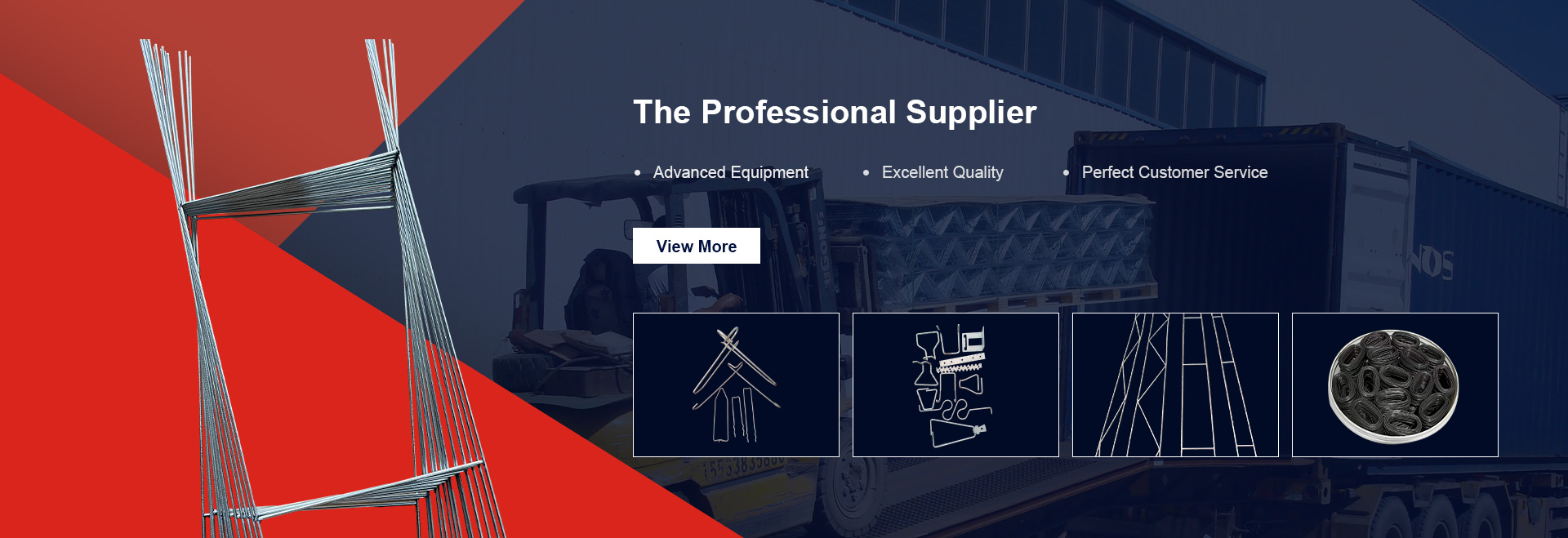
- Mobile Phone
- +8613931874955
- sales@cntcmetal.com
Coiled Round Wire Springs for Enhanced Performance and Durability in Various Applications
Understanding Round Wire Coil Springs Applications and Characteristics
Round wire coil springs are a fundamental component in mechanical systems, widely used across a variety of industries due to their unique properties and versatile applications. These springs are designed to store and release energy, absorb shock, and provide resistance to forces. Understanding their design, applications, and manufacturing processes is essential for engineers and designers who incorporate these components into their projects.
What is a Round Wire Coil Spring?
A round wire coil spring is defined by its helical shape created from a cylindrical wire. The wire is typically made from materials such as stainless steel, music wire, or other alloys chosen for their strength, elasticity, and corrosion resistance. The diameter of the wire, the diameter of the coil (often referred to as the spring's outer diameter), and the number of active coils are important factors that determine the spring's characteristics.
These springs can be classified into different types based on their applications. The most common types include compression springs, tension springs, and torsion springs. Compression springs are designed to resist axial forces and compress under load, tension springs stretch under load, while torsion springs exert torque when twisted.
Manufacturing Process
The manufacturing of round wire coil springs involves several key steps, starting with wire selection. Engineers must consider material properties based on the spring's intended application, such as tensile strength, fatigue resistance, and environmental conditions. The wire is then formed into coils using specialized machinery that allows for precise control over the coil dimensions and geometry.
After coiling, the springs often undergo heat treatment processes to enhance their mechanical properties. This process involves heating the springs to specific temperatures followed by rapid cooling, which helps to relieve internal stresses and improve the spring's overall strength and resilience.
Finally, surface treatments may be applied to enhance corrosion resistance or to modify the finish of the spring. These treatments can include coating, plating, or anodizing, depending on the intended use of the spring.
round wire coil spring

Applications Across Industries
Round wire coil springs are utilized in countless applications, ranging from consumer products to heavy machinery. In the automotive industry, they are crucial in components such as shock absorbers and suspension systems, where they help to smooth out the ride and enhance vehicle stability. In household appliances, these springs can be found in devices like washing machines and lawnmowers, where they play a role in mechanisms that require motion control and durability.
The aerospace and medical sectors also heavily rely on coil springs. In aircraft, springs are used in landing gear, fuel systems, and control surfaces, where reliability and performance are critical. Similarly, in the medical field, round wire coil springs are found in surgical instruments and implants, where their ability to withstand repeated stress while maintaining precision is vital.
Design Considerations
When designing a round wire coil spring, engineers must consider several factors. The spring’s load capacity, travel length, and spring rate (the amount of force required to compress the spring a certain distance) must align with the application's requirements. Additionally, the spring should be designed to withstand fatigue, especially in applications where it will experience repeated cycles of loading and unloading.
Furthermore, the environment in which the spring operates plays a significant role in its design. For instance, springs used in corrosive environments need appropriate protection against rust and degradation, whereas those in high-temperature applications might require materials that can maintain performance under thermal stress.
Conclusion
Round wire coil springs are a vital element in engineering designs across numerous sectors. Their ability to store and release energy makes them indispensable in machinery, automotive, aerospace, and consumer products. By understanding their manufacturing processes, design considerations, and varied applications, professionals can effectively integrate these springs into their projects, ensuring functionality and reliability. As technology advances, the development of new materials and manufacturing techniques will further enhance the capabilities and applications of round wire coil springs, underscoring their importance in modern engineering.
share:
-
Why Sacrificial Formwork Is Redefining Underground ConstructionNewsJun.06,2025
-
The Structural Dynamics of Modern Concrete: How Snake Spacers Revolutionize Flexible ReinforcementNewsJun.06,2025
-
Snake Spacers Smart-Lock Concrete Reinforcement with Surgical PrecisionNewsJun.06,2025
-
Snake Spacers: Reinforcement Precision for Modern Concrete ProjectsNewsJun.06,2025
-
Snake Spacers Powering Concrete's Structural DNANewsJun.06,2025
-
Slither into Success: Snake Spacers' Precision Bite for Unbreakable ReinforcementNewsJun.06,2025
-
Sacrificial Formwork: Building Stronger, Faster, and Safer StructuresNewsJun.06,2025



















